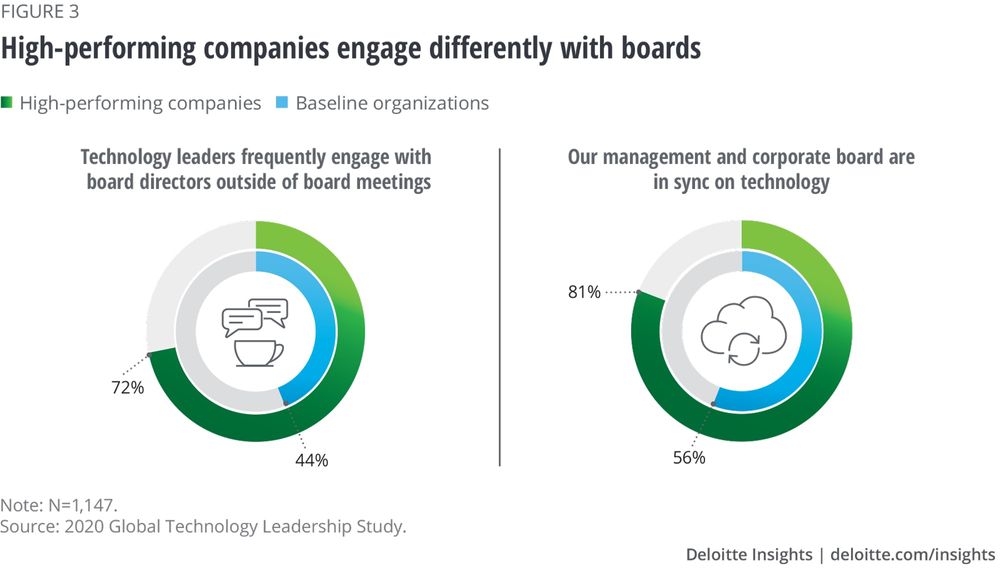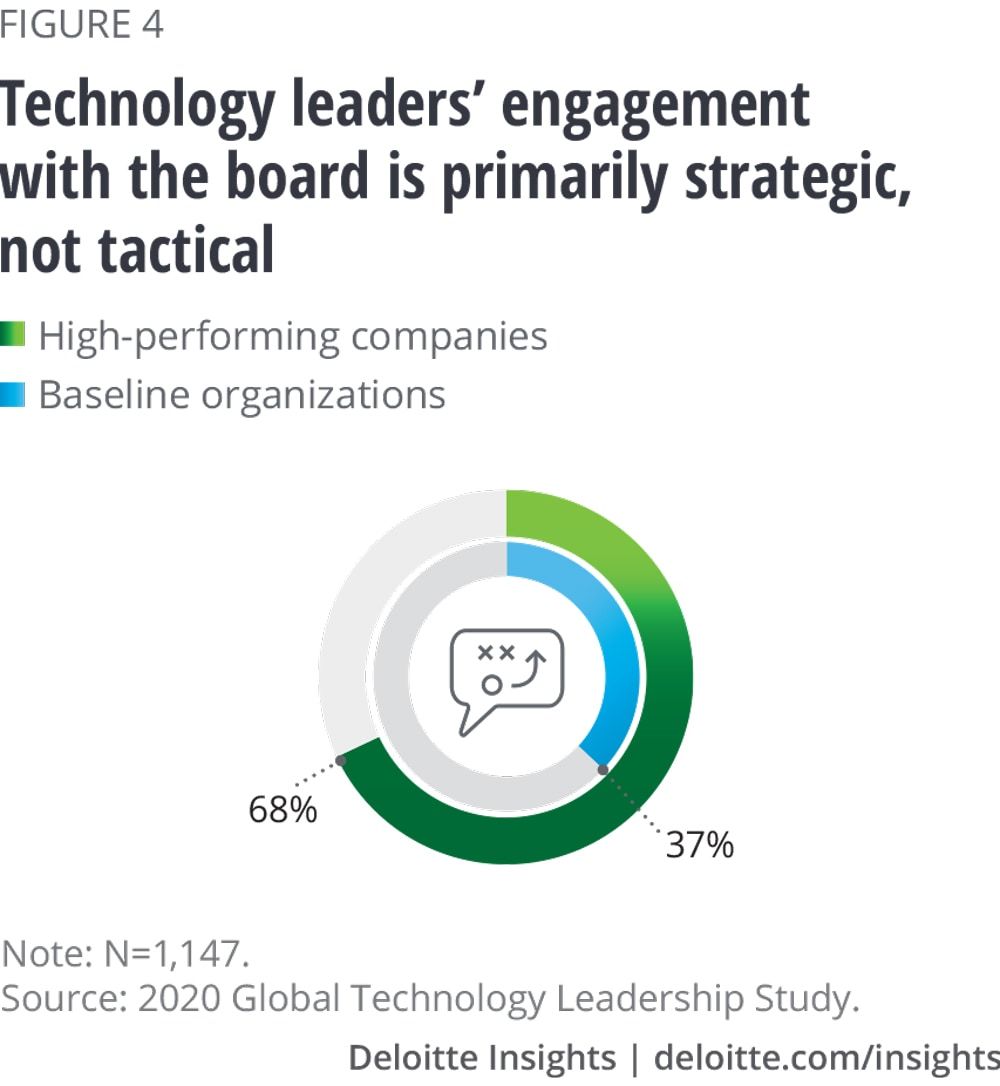Technology in the Board Room - The Tech-Enabled CIO Strategy

When analysts at Deloitte were mining their latest Global Technology Leadership Study for performance-related factors, one stood out. The CIOs of the high performing organisations were disproportionately likely to have a “strong positive relationship” with the board of directors.
Those companies were also more likely to have board members with a background in technology.

Noting that these relationships are “typically not a natural, everyday occurrence” the analysts suggest the dynamic is forged by “an intentional act driven by tech leaders than requires purposeful planning and effort.”
But to what end?
Large-scale digital and technology transformation is attractive to tech leaders and boards. It’s bold, visionary and can act as a bandwagon for more diverse strategic goals. That, in turn, informs priorities, decisions and investments. High performing companies are using technology to drive not just technological transformation but wider, more far-reaching systemic change.
Benefits of an alliance between tech leadership and boards
The analysts found three principle benefits of an alliance between tech leadership and boards.
1. Foundation of trust to pursue a bold vision in order to chase aggressive strategic goals.

2. Ongoing opportunities for engagement, deepening relationships, engendering trust and allowing education and engagement of directors on technology and its benefits.

3. Balanced oversight across resilience issues and growth opportunities, allowing continuity of growth pursuit during times of economic uncertainty.

Technology: “a key lever for corporate performance”
Deliotte’s analysts recommend CIOs and tech leaders who want to pursue a deeper relationship with the board consider finding more creative ways to express the benefits of technology across the organisation. In addition, boards will need to become more tech savvy.
They developed a set of seven questions to guide CIOs and tech leaders pursuing a stronger relationship with the board of directors.
1. What are the governance guidelines for technology investments?
2. What percentage of technology spend is fixed cost?
3. How much technical debt do we have?
4. Will the current technology operating model and culture support future strategy?
5. How do we compare to our competition?
6. What technology capabilities can help reimagine the future of our work and the workplace?
7. What are the key obstacles in attracting and engaging top technology talent?
- Saama’s Lisa Moneymaker to speak at Tech & AI LIVE LondonDigital Transformation
- Deloitte: Delivering Cloud ERP for Higher EducationCloud & Cybersecurity
- Deloitte: Delivering Cloud ERP for Higher EducationCloud & Cybersecurity
- Deloitte Streamlines Atlantic Health System’s Cloud AdoptionCloud & Cybersecurity






